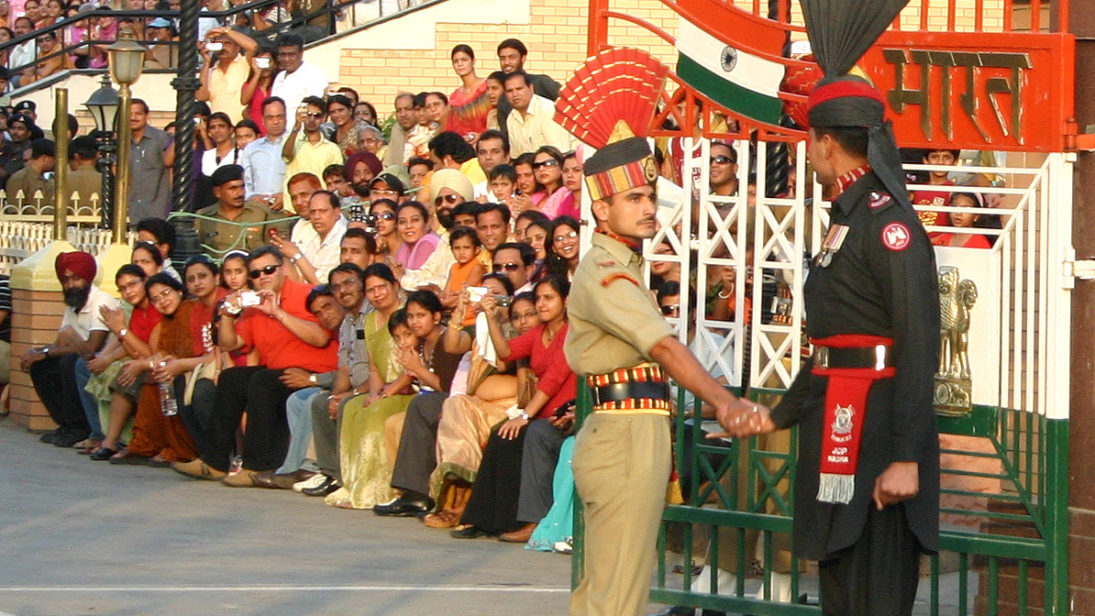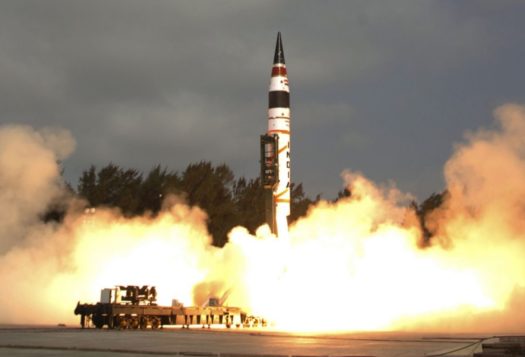
Since the BJP came to power in the May 2014 elections, New Delhi has linked the resumption of the peace process with Islamabad to action against India-focused militant groups operating in Pakistan. India’s singular focus on terrorism has led to the cancellation of numerous scheduled diplomatic dialogues between the two nuclear neighbors. For example, Pakistan recently invited India for an exclusive dialogue on Kashmir, and New Delhi responded by refusing to discuss anything except terrorism. Since the issue of terrorism is so central to engagement with Pakistan, what options does India have to achieve its objectives? In Not War, Not Peace?: Motivating Pakistan to Prevent Cross-Border Terrorism, scholars George Perkovich and Toby Dalton have examined two categories of choices for India: a) strategies aimed to deter and compel Pakistan so that another terrorist attack emanating from its territory does not take place in mainland India, and b) options geared towards pressuring and punishing Islamabad if a terrorist attack in future is linked to Pakistan, with the goal to push Pakistan to act decisively against anti-India militant groups operating on its territory.
Summary and Critique
Strategies in the first category include the use of covert operations, developing new nuclear options, and the use of ‘soft’ power which the authors call “non-violent compellence.” While the authors consider a hard military action in response to a terrorist strike, including ground invasion, escalatory, selective airstrikes are considered less so. Perkovich and Dalton dissect each choice with analytical rigor for potential escalation risks, feasibility, political cost, strategic benefits, and Indian capabilities to carry each option out. Moreover, the book analyses Pakistan’s response to each option and its impact on domestic politics, which further raises the stakes and compounds the strategic picture for Indian policymakers.
Despite escalatory challenges inherent in each option, many in the Indian strategic community advocate building capabilities and crafting doctrines that will enable Indian military planners and political decisionmakers to dominate the conflict at every level. For instance, Indian security professionals–civilians and military alike–have debated the contours of a proactive military strategy for nearly a decade now. Perkovich and Dalton suggest that a critical examination of constraints and strategic challenges in activating a Cold Start type strategy, in response to a future terrorist attack, should motivate Indian military planners to rethink the military option. Pakistan has already lowered the nuclear threshold with introduction of battlefield nuclear weapons. The Indian challenge therefore, the authors argue, is to find a way to inflict rapid punishment with limited military goals while preventing the situation from escalating further. Moreover, a point left unaddressed is that an escalation spiral already seems underway—Pakistan cannot further lower the nuclear threshold if India pursues other options at its disposal.
If India decides to go ahead with ground operations backed by air power, Islamabad and New Delhi will be in uncharted territory. The authors argue that both will seek to dominate the escalation ladder. They rightly point out that not much thought has been given to how India will control the escalation dynamics at each level once a conflict ensues. Even if India attempts to manipulate the risk of escalation, not much discourse has been devoted to the question of how it will achieve its political objectives and what the unintended costs will be, which could perhaps be more than the initial terror attack.
Another attractive choice for Indian decision makers, the authors argue, is to placate domestic audiences through the use of calibrated air power. India can attack selected targets in Pakistan-administered Kashmir and on mainland Pakistan. The authors rightly observe that Pakistani decision makers will, inevitably, face strong domestic calls to respond to Indian air strikes, which will certainly lead to serious escalation. However, the point to understand is that the centrality of Kashmir in Pakistan’s India discourse compels Pakistani policymakers to respond in a tit-for-tat fashion. In 2011, for example, after the unilateral U.S. raid to kill Osama Bin Laden, Pakistani leaders were at pains to reassure the angry public that if it would have been Indians, they would have responded forcefully.
Nuclear weapons, on the other hand, have limited utility in the broader Pakistan-India competition. They only deter the other side from using nuclear weapons and can provide security against a large-scale ground invasion. Conversely, nuclear weapons also increase tolerance of states to violence and terrorism. This inherent tolerance makes covert operations an appealing policy option, but can it contribute to attaining Indian political objectives and bring about a desired strategic outcome? Intelligence-centric operations would have to be supported by a diplomatic offensive to compel Pakistan’s hand. As the authors note, India, in recent years, has implemented this strategy to coerce Pakistan through domestic interference in Karachi and Balochistan. It has, however, not yielded a favorable outcome for India yet.

Perkovich and Dalton, however, suggest a different approach: non-violent compellence, which is leveraging India’s growing political, economic and cultural standing to influence states to put diplomatic and economic pressure on Pakistan. Prime Minister Modi has already tried this approach, going on a diplomatic offensive against Pakistan, with the objective of raising the diplomatic cost for Islamabad of tolerating India-centric militant groups in Pakistan. However, Pakistan has responded in equal measure by trying to establish symmetry on the use of sub-conventional violence by both sides.
Policymakers in Washington and New Delhi, however, will not be moved by the authors’ suggestion that the United States should review its Pakistan policy, and that New Delhi be open to result-oriented negotiations with Pakistan. If New Delhi is focused on a diplomatic offensive to corner Pakistan on the issue of terrorism, the prospects of result-oriented talks are not that bright. Besides, will New Delhi actually engage in substantive negotiations to resolve disputes without similar international pressure on it? For policymakers in Washington, engagement with Pakistan, which has the potential to influence security dynamics in Central and South Asia, as well as the Middle East, is crucial in a complex regional security environment.
A factor which Perkovich and Dalton do not address in detail is the possibility of militant groups undertaking attacks in India because of their transnational ideology. There is also an overlap between anti-India militant groups and other non-state actors in the region that could result in attacks in India. And these cross-linkages among militant groups and their collaboration may escape monitoring and scrutiny by Pakistani security apparatus. In such a scenario, the Pakistani government cannot be blamed for the attack, rather Islamabad and New Delhi would need to cooperate actively for action against those involved in the attack and their collaborators in Pakistan and India.
Nonetheless, the book is a must-read volume for any scholar with an interest in South Asian security issues and the Pakistan-India relationship. Extensive and perceptive interviews with former senior Indian, Pakistan, and U.S. officials who have engaged with both states on these issues enrich the analysis.
Concluding Thoughts
Pakistan and India are locked in a stalemate in the sub-conventional, conventional, and nuclear realms. Both sides have demonstrated resolve to stand firm. Even if negotiations commence, do they know what bargain to strike on these three levels? What are Indian and Pakistani conceptions of a bargain? Aside from circular arguments focusing on nuclear stabilization requiring conventional parity which necessitates action against anti-India militant groups in Pakistan, new ways of unlocking the stalemate are required. Negotiations require understanding of each other’s viewpoint of political victory and in case of active battle, war termination. Literature on Indian and Pakistani understanding of these two concepts is scarce. Future research can explore models that take into account symmetries achieved by both sides and how these can be used for bargaining, as well as both sides’ notions of political victory and war termination.
Editor’s note: In this four-part series, SAV contributors Mayuri Mukherjee, Muhammad Faisal, Fahd Humayun, and Tanvi Kulkarni review authors George Perkovich and Toby Dalton‘s new book Not War, Not Peace?: Motivating Pakistan to Prevent Cross-Border Terrorism (Oxford University Press, 2016). Read the entire series here.
***
Image 1: Joshua Song, Flickr
Image 2: Andalou Agency, Getty


